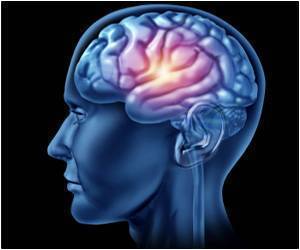Highlights
- Genetically altered Salmonella typhimurium that showed no toxicity and a lack of the enzyme purine holds promise in the treatment of brain tumor.
- Brain tumor cells are rich in purine, which leads the bacterium to the tumor cells. P53 and azurin aid in killing the tumor cells.
- 20% improvement in survival was noticed in the experimental studies, indicating the potential use of this bacterium in the treatment of glioblastomas.
The research was conducted in the laboratory of Dr. Ravi Bellamkonda who is the Dean of Duke’s School of Engineering. Very few people survive glioblastoma for a long period and so, a 20% increase in survival rate was very encouraging and phenomenal, according to the researchers who undertook the study.
The idea to introduce Salmonella typhimurium was obtained from earlier studies that showed that the presence of infection activated the immune system to attack the tumors. Although later studies that dealt with the use of genetically detoxified Salmonella did not prove effective.
Tumor-Seeking Missiles
In order to convert the intestinal bacteria into an organism that would seek out cancer cells, Bellamkonda along with senior author Nalini Mehta selected a detoxified strain of S. typhimurium which lacked a vital enzyme called purine. This forced the bacteria to look for supplies of this enzyme. Tumors happen to be rich in purine, which directs these detoxified bacteria to the tumors in large numbers.Killing Tumor Cells
Dr. Ravi Bellamkonda said that the major challenge in treating the gliomas is that there was no clear demarcation between cancerous cells and non-cancerous cells, which increased the difficulty of removing the cancer using surgical methods. The scientist further stated that designing bacteria that would seek out the tumors and ill specifically tumor cells due to the hypoxic (deprived of adequate oxygen) conditions maintained and due to the rich source of purine was exciting. The toxicity of the bacterium was deactivated which meant that they would not lead to infections on their own. When asked about how the bacterium would be cleared, Dr. Ravi stated that since their natural food source would be depleted as soon as the tumor is cleared, the bacterium would be wiped out too.
The research team injected the altered bacterium directly into the brain of the rats under study. The course of action among human trials would be an inclusion of the bacterium after surgical removal of the primary tumor. The treatment was found to be successful in 20% of the rats and led to regression of the tumor, increasing their life by 100 days.
Among the 80% of the rats for which the treatment did not increase survival, it did not affect the length of time the rats survived. The failure to treat these rats were concluded to be due to:
- Poor bacterial penetration
- Aggressive growth of the tumor which far exceeded the growth of the bacterium.
Future Plans
The research team is now working on altering the bacteria to produce drugs that would have a stronger effect on the tumors. The researchers are, however, cautious as the drugs will not be very specific to the tumors and could lead to the development of side effects.
Glioblastoma
These tumors develop from the astrocytes, which are star-shaped cells with glue like and form the supportive tissue of the brain. They are highly malignant, reproduce quickly and are supported by an extensive network of blood vessels.
These tumors are found in the cerebral hemispheres of the brain, but can also be found at different places in the brain and the spinal cord. Glioblastomas are a combination of different cell types and could also contain cystic mineral, blood vessels, mixed grade of cells and calcium deposits.
In glioblastoma, a large number of tumor cells develop and are suitable nourished by considerable blood supply. There are dead cells that are found in the center of the tumor but since these cells originate in the brain, they grow well in the brain but rarely spread to other parts of the body, and they are nourished by an ample blood supply.
Symptoms
The common symptoms are increased pressure in the brain, headache, nausea, vomiting, drowsiness, weakness in one part of the body, memory or speech difficulties and eye problems.
Incidence
They constitute:
- 15.4% of all primary brain tumors
- 60-75% of all astrocytomas.
- More frequent in older adults and constitute only 3% of childhood brain tumors.
The current study that uses genetically altered Salmonella typhimurium holds promise in the treatment of this form of cancer, an increase in the survival rate and remission of cancer has for so long been elusive in the treatment methods utilized thus far.
References:
- Nalini Mehta, Johnathan G. Lyon, Ketki Patil, Nassir Mokarram, Christine Kim, Ravi V. Bellamkonda,“Bacterial Carriers for Glioblastoma Therapy.” Molecular Therapy – Oncolytics, 2016. DOI: 10.1016/j.omto.2016.12.003
- Glioblastoma (GBM) - (http://www.abta.org/brain-tumor-information/types-of tumors/glioblastoma.html)















